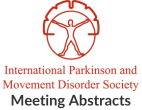Globus pallidus deep brain stimulation (GPi-DBS) in one patient with complex early-onset dystonia and KMT2B mutation: A case report
Objective: To assess long term results of GPi-DBS in one patient with generalized dystonia with KMT2B mutation. Background: Mutations in heterozygosis of the KMT2B gene,…Genome-wide association study identifies common genetic variants associated with cervical dystonia
Objective: We aim to identify genetic variants of cervical dystonia (CD) in a large cohort of patients using a genome-wide association study (GWAS) approach. Background:…Encephalopathy in a Japanese patient with Rapid-Onset Dystonia-Parkinsonism carrying a Novel ATP1A3 mutation
Objective: To investigate underlying pathomechanisms of DYT/PARK-ATP1A3 in Japanese patient with rapid-onset dystonia-parkinsonism (RDP). Background: Mutations in ATP1A3 would lead to development of various neurological…Screening study of COL6A3 in sporadic isolated dystonia
Objective: To verify the role of COL6A3 in isolated dystonia. Background: COL6A3 has recently been suggested to cause a form of autosomal recessive isolated dystonia.…Siblings with a PRKRA (DYT16) Mutation and Startle Myoclonus
Objective: To characterize and expand the phenotype of a family from North-East England with DYT16. Background: DYT16 is an autosomal recessive disease associated with mutations…Paroxysmal multifocal dystonia with hemiplegic migraine possibly related to novel CACNA1A mutation
Objective: To report a case of a unique clinical presentation of hemiplegic migraine associated with paroxysmal multifocal dystonia possibly related to a novel CACNA1A mutation.…Association analysis of single nucleotide polymorphisms near the DYT3 locus to dystonic symptoms in X-linked dystonia-parkinsonism
Objective: We aimed to elucidatewhether single nucleotide polymorphisms within the XDP locus affect the phenotypic expression of XDP. Background: X-linked Dystonia-Parkinsonism (XDP, DYT3, Lubag Disease,…Characterization of GNB1 mutations as a cause of global developmental delay in combination with dystonia, ataxia, or chorea in children
Objective: To investigate the phenotypic and genotypic spectrum of GNB1 (guanine nucleotide-binding protein, beta 1) mutations and to functionally evaluate their pathogenicity. Background: Global developmental…Variations in ANO3 gene in patients with cervical dystonia
Objective: The aim of our study was to establish prevalence of variants in the gene for anoctamin 3 (ANO3) in a population of patients with…Haploinsufficiency of KMT2B causes myoclonus-dystonia with impaired psychomotor ability
Objective: To investigate the genetic defect in patients with early-onset dystonia and myoclonus accompanying various neurological features. Background: Unlike other Mendelian disorders, dystonia genetics has…
- « Previous Page
- 1
- …
- 23
- 24
- 25
- 26
- 27
- …
- 29
- Next Page »
